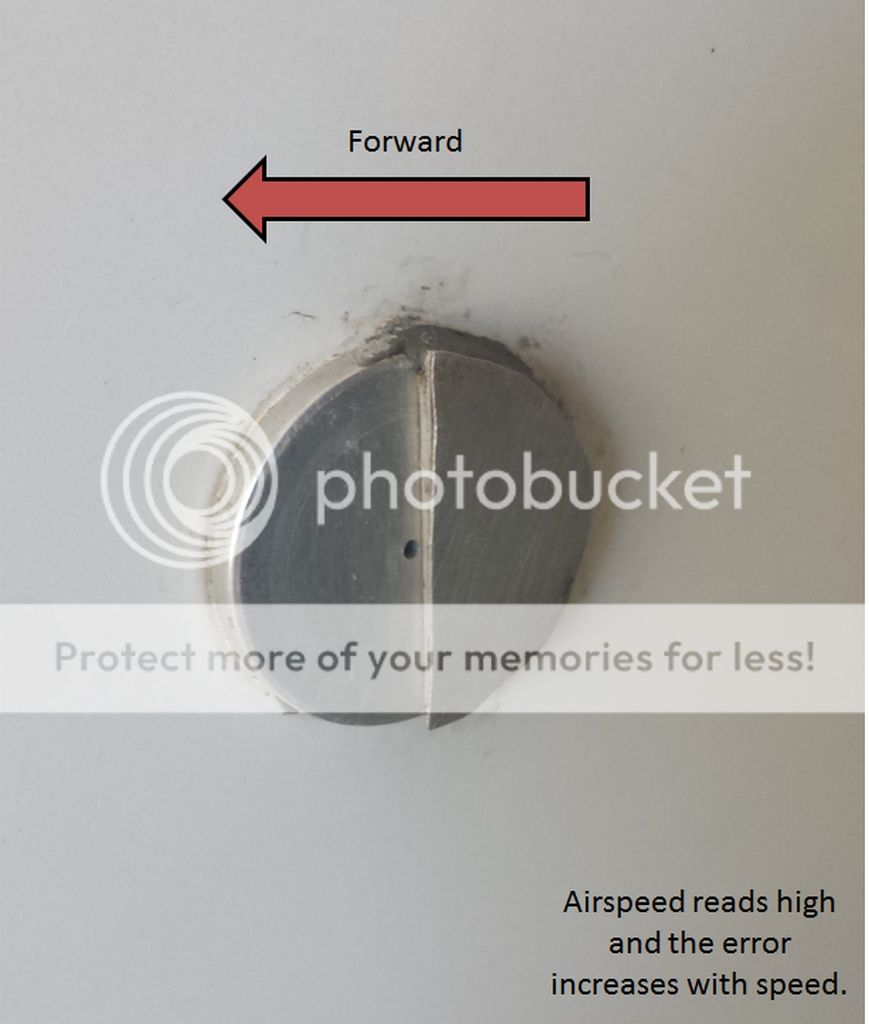My airspeed has been reading 8-9 MPH high (compared to 4 leg GPS testing) at cruise speeds for the last several months. I found a static leak and fixed it, but that made no improvement. Last week I had my pitot static certification done and the tester indicated that that static system was very tight with no leaks. We also confirmed that the GRT ASI reads within 1 MPH of his test set.
This leaves me with a static port shape / location or pitot problem (a Dynon Pitot). I have the standard Van's recommended rivet, though I am not sure it is in the exact recommended location. Does anyone have details for the RV-6 location? I struggled to find it on the plans.
Beyond this, I am scratching my head on how to address this. The odd part is that I tested and confirmed fairly accurate airspeed's last year. I was certain it is was the leak, but it wasn't. Then I was certain the Dynon was the problem, but it had the same error as the new GRT that has been confirmed to be accurate.
Thanks for any guidance you can provide.
Larry
This leaves me with a static port shape / location or pitot problem (a Dynon Pitot). I have the standard Van's recommended rivet, though I am not sure it is in the exact recommended location. Does anyone have details for the RV-6 location? I struggled to find it on the plans.
Beyond this, I am scratching my head on how to address this. The odd part is that I tested and confirmed fairly accurate airspeed's last year. I was certain it is was the leak, but it wasn't. Then I was certain the Dynon was the problem, but it had the same error as the new GRT that has been confirmed to be accurate.
Thanks for any guidance you can provide.
Larry






